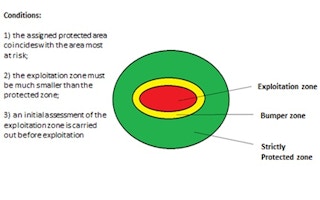The demand for metals and other resources continues to rise exponentially with devastating environmental impacts. While it’s easy to point the finger at mining companies, the real ethical questions surrounding the exploitation of natural resources are much more complex. Their solutions require us to deeply rethink our societal models.
It is a simple fact that the world’s expanding population and exponentially rising consumerism is pushing up demand for natural resources tremendously. Such a rise in demand requires more resources to be extracted from the ground with often significant environmental impacts, particularly in biodiversity rich areas.
The roots of the problem
Society
While clearly mining companies are directly responsible for the negative impacts of extraction, these companies exploit resources because society demands that they provide raw materials for a multitude of uses that are part of our daily lives.
Who in this new century would deny they conveniently make use of metals and minerals in the cars that we drive, the computers that provide our daily work tools, the factories that make our goods and the buildings where we work and live? Metals and minerals are simply everywhere around us and we often forget their true costs and origins.
The bottom line is that as consumers, we are all responsible for mining exploitation.
The extracting companies
Having said that, we still need to hold the mining industry accountable for the widespread unsustainable practices in use today. Numerous mining corporations are directly responsible for significant environmental damages, which include deforestation as well as physical degradation and chemical pollution.
But the greatest threats of mining activities by far are the destruction and contamination of bio-diverse locations which are driving the extinction of species. Indeed, many mining activities take place in biodiversity rich areas.
Governments
Those governments which allow mining companies to destroy sensitive environments within their jurisdictions are also responsible. Governments are the only authorities which can control and, in some cases, deny exploitation in areas which have been assessed as sensitive from an environmental point of view.
People need to hold their elected officials responsible for protecting such areas, which have better long term value as eco-tourism destinations or other uses, from the irreversible damage that can occur from short term exploitation.
Trends and new threats
While environmental impacts of mining activities have long been known, if not acted upon, new significant threats are starting to emerge.
Because the demand for resources is growing and their price (especially metals) is also rising, mining companies are now looking at operations in areas which have long been considered too expensive or difficult to exploit. These remote sites include lands in the Arctic zones below the permafrost and deep-sea beds.
Of particular concern is the large scale exploitation on ocean floor mountain formations called seamounts, spurred by recent discoveries of certain rare and valuable resources including cobalt and nickel.
Seamounts are also extremely rich in biodiversity with a very strong endemism, and the mining of the ocean formation should be considered with care. Exploitation of its resources will have devastating impacts on rare marine life forms which are yet to be studied and discovered.
The solutions
While many measures have been put in place to limit the impacts of the mining industry, with varying levels of success, the new threats described above should raise deep concerns about the effects of mineral exploitation on biodiversity.
Recycling
While metals and minerals recycling already takes place in many parts of the world, the overall effectiveness is still relatively low.
To relieve the pressure to extract new resources from the ground, we should vastly improve systems for recirculating used metals and minerals. This would require improving collection, treatment and recirculation of these items in sectors as diverse as construction, transport and consumer goods through the implementation of closed-loop systems, take-back policies and trading mechanisms.
However, recycling alone will not suffice.
Protecting the most sensitive areas
One controversial alternative would be to designate small exploitation zones, near biodiversity sensitive sites, to be sacrificed under tight monitoring and within strict boundaries to better preserve larger areas nearby.
The philosophy behind this is acceptance of the fact that it is not possible to both exploit physical resources and preserve living organisms on the same site. Current efforts to do just that are failing.
This idea might seem extreme, but if we analyse the problem as a whole with an understanding of how conservation efforts work, the idea could show more promise than current practices.
Sylvain Richer de Forges is head of sustainability at Siloso Beach Resort.


















